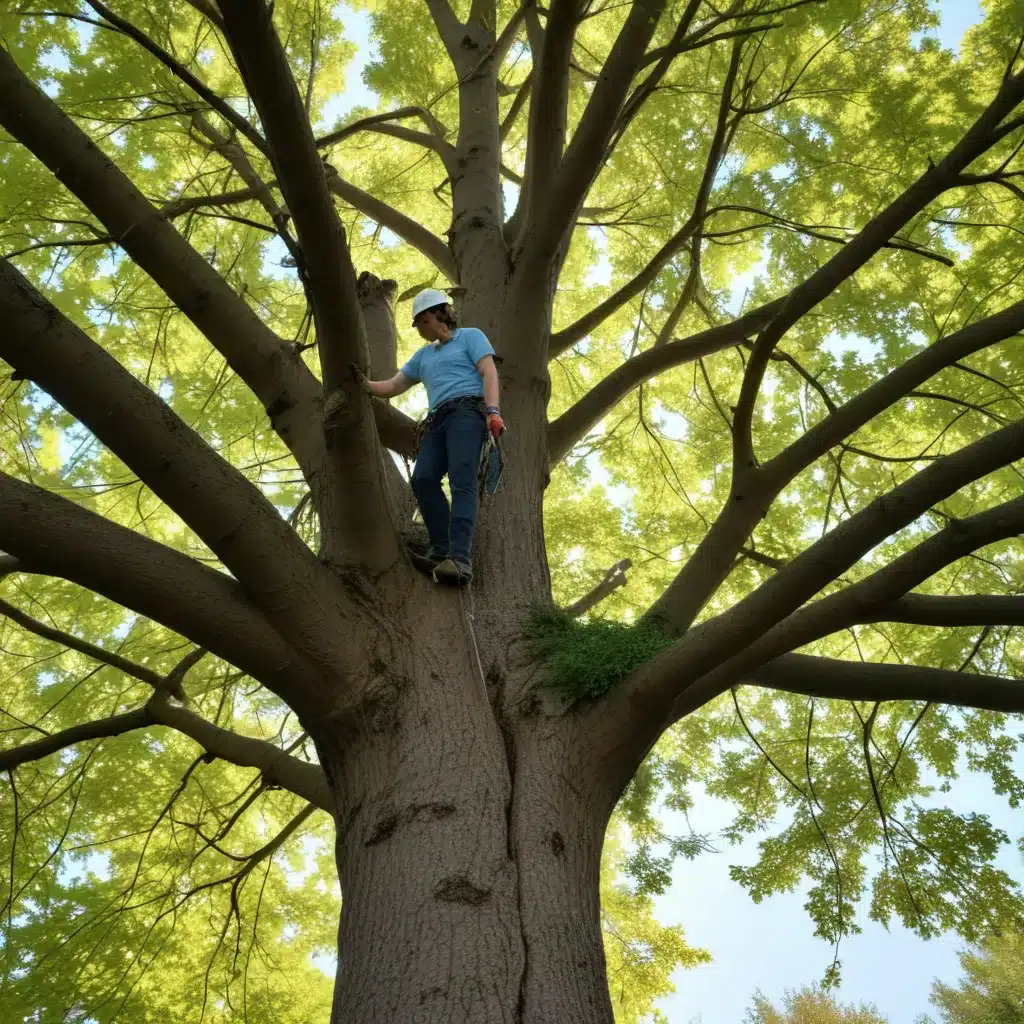
As a tree care specialist at TriCounty Tree Care, I understand the profound significance of comprehensive, seasonal tree maintenance in cultivating resilient and thriving ecosystems. Trees are not merely passive elements in a landscape; they are dynamic, living organisms that play a crucial role in shaping the ecological balance of our environments. By adopting a holistic, seasonally-attuned approach to arboricultural best practices, we can empower trees to reach their full potential, delivering myriad benefits to the communities we serve.
Tree Care and Ecosystem Resilience
Tree Lifecycle and Seasonal Needs
At the core of effective tree maintenance lies a deep understanding of the phenological cycles that govern a tree’s growth and development. Each season brings unique challenges and opportunities for the tree, from the dormancy of winter to the explosive growth of spring, the heat-stressed conditions of summer, and the transition to autumn’s senescence. By aligning our care regimens with these natural rhythms, we can optimize the tree’s health and resilience.
Preventive Maintenance Strategies
Proactive, preventive maintenance is the cornerstone of sustainable tree care. Regular pruning and trimming not only enhance a tree’s structural integrity and aesthetic appeal but also mitigate the risk of storm damage, pest infestations, and disease outbreaks. Implementing these practices at the appropriate times of year, as dictated by the tree’s specific needs, is crucial for ensuring long-term vigor and longevity.
Ecosystem-Centric Approaches
Trees do not exist in isolation; they are inextricably linked to the broader ecological tapestry of their surroundings. By adopting an ecosystem-centric perspective, we can leverage the synergistic relationships between trees and other flora and fauna to cultivate thriving, self-sustaining landscapes. This holistic approach considers the tree’s role in supporting biodiversity, regulating microclimate, and fostering nutrient cycling – all of which contribute to the overall resilience of the entire system.
Arboricultural Best Practices
Pruning and Trimming Techniques
Proper pruning and trimming techniques are essential for maintaining the structural integrity and aesthetic appeal of trees. Our arborists carefully assess the tree’s unique characteristics, growth patterns, and environmental conditions to develop customized pruning strategies that promote apical dominance, branch architecture, and light penetration – all while minimizing the risk of disease and decay.
Pest and Disease Management
Vigilant monitoring and proactive pest and disease management are crucial for safeguarding the health of our trees. By identifying early warning signs and implementing targeted, environmentally responsible interventions, we can mitigate the spread of harmful pathogens and insect infestations, ensuring the long-term vitality of the trees in our care.
Soil and Nutrient Management
The health and resilience of a tree are directly tied to the quality of the soil in which it is rooted. Our team of specialists employs soil testing, nutrient amendment, and root zone management techniques to optimize the availability of essential macro- and micronutrients, enhance soil structure, and foster a thriving rhizosphere – the foundation for a tree’s overall wellbeing.
Environmental Benefits of Healthy Trees
Carbon Sequestration and Air Purification
Thriving, well-maintained trees are powerful allies in the fight against climate change. Through the process of photosynthesis, trees absorb carbon dioxide from the atmosphere, converting it into oxygen and storing the carbon in their biomass. By strategically incorporating diverse, climate-adaptive tree species into the landscape, we can amplify the carbon sequestration potential of our urban and suburban environments.
Stormwater Mitigation and Erosion Control
The extensive root systems and canopy cover of trees play a vital role in regulating the flow of stormwater and preventing soil erosion. By intercepting rainfall, slowing runoff, and promoting groundwater recharge, trees help to alleviate the burden on municipal drainage infrastructure and protect vulnerable landscapes from the damaging effects of flooding and soil loss.
Urban Cooling and Microclimate Regulation
In the face of rising global temperatures and the urban heat island effect, the cooling benefits of trees become increasingly crucial. Through evapotranspiration and the provision of shade, trees can significantly lower ambient temperatures, creating more comfortable and livable urban environments. This, in turn, reduces the demand for energy-intensive cooling systems, further contributing to the sustainability of our communities.
Sustainable Tree Cultivation
Native Species Selection and Diversity
When it comes to cultivating resilient, ecologically-integrated tree populations, diversity is key. By prioritizing the use of native tree species that are adapted to the local climate and soil conditions, we can create landscapes that are inherently more resistant to pests, diseases, and environmental stressors. This, in turn, reduces the need for intensive management interventions and promotes the flourishing of native wildlife.
Drought-Tolerant and Climate-Adaptive Trees
As the effects of climate change become increasingly pronounced, the selection of drought-tolerant and climate-adaptive tree species is paramount. By incorporating species that are resilient to heat, drought, and other extreme weather events, we can ensure the long-term viability of our tree canopies, safeguarding the vital ecosystem services they provide.
Long-Term Planting and Establishment
Sustainable tree cultivation requires a long-term, holistic approach that extends beyond the initial planting. Our team of experts at TriCounty Tree Care provides comprehensive establishment care, including irrigation, mulching, and monitoring, to ensure the successful integration of new trees into the landscape. By investing in the tree’s early development, we set the stage for decades of healthy growth and environmental benefits.
In conclusion, the seasonal maintenance of trees is not merely a matter of aesthetics or convenience; it is a critical component of cultivating resilient and thriving ecosystems. By aligning our arboricultural practices with the natural rhythms of the tree’s lifecycle, employing best management techniques, and prioritizing sustainable cultivation strategies, we can empower trees to reach their full potential as living, breathing pillars of ecological balance. At TriCounty Tree Care, we are committed to this holistic, ecosystem-centric approach, ensuring the long-term vitality of the landscapes we serve.


